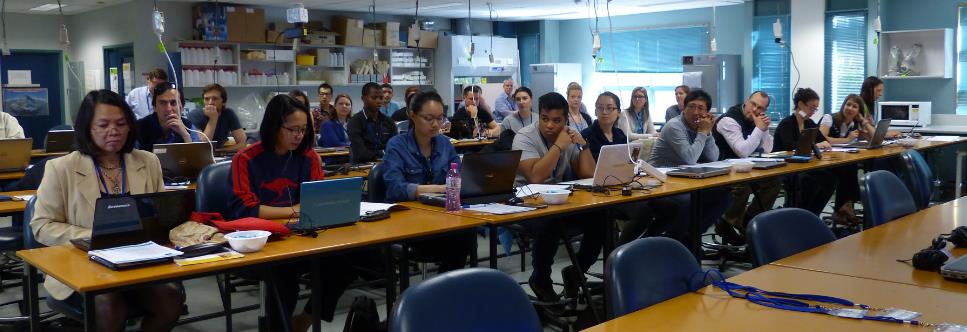Poultry CRC joined forces with UNE on 2nd and 3rd October to run a highly successful feed formulation workshop in Armidale. Thirty five delegates from across Australia came to hear from an expert line-up of nutritionists, including Geoff Clatworthy (Ingham’s), Greg Connors (Ridley) and Tim Walker (CRC program manager and formerly nutritionist for Bartters). Between these three speakers alone, there was almost 85 years of experience in poultry formulations. It was indeed a unique opportunity to hear from some of the most experienced feed formulators in the country.
Event leader, UNE’s professor Bob Swick was also assisted on the day by Dr Basilia Reas (US Soybean Export Council) and Dr Nick Rodgers (Novus).
The workshop kicked off with an overview from Geoff, outlining the various roles of a modern nutritionist. He explained how it wasn’t simply enough to be able to use one of the various formulation programs, but how today a nutritionist had to monitor and control all aspects of the feed chain. He spoke about procurement, quality assurance and the manufacturing processes as well as the central role of understanding the needs of the animals you were formulating for. To be a good commercial nutritionist you need to be part stock-broker, commodity buyer, industrial chemist, meteorologist, animal scientist as well as a great logistics and planning manager, he said.

Attendees were keen to listen to Geoff, with one commenting that “the best part (of the workshop) was hearing from Geoff, and being able to hear about formulation from an industry perspective. He has such an extensive knowledge!”
Greg Connors also gave a great talk, clearly explaining the importance of amino acids and micro nutrients in a diet. He illustrated the importance of using standardised ileal digestible amino acids and showed through a number of examples how it was important to distinguish between total, digestible, and standardised ileal digestible amino acids. He explained how the digestibility of a nutrient represents the single, greatest determinant of amino acid availability.
Tim Walker took up this theme with his presentation, titled “Understanding your ingredients and animals”. He echoed Geoff’s earlier comments when saying it was crucial to understand exactly what you were buying, and encouraged delegates to look at Grain Trade Australia’s commodity standards. Tim covered grain quality tests and protein meal quality before speaking about grain by-products, meals, fats and oils.

Basilia Reas also spoke about quality, but specifically about soybean meal quality, illustrating the wide variation in soybean meal with a number of samples that she brought with her. She explained how soybean meal is perhaps the most important ingredient for poultry feed formulation in the world.
As well as the high quality of speakers, delegates were given many hours of hands on formulation exercises, to put into practice what they had learned. The workshop ended by breaking the group into teams, who competed with one another to formulate the best and cheapest diets given a strict set of criteria. Impressively, all teams came out with diets that were both commercially feasible and economical. One delegate commented that this workshop “…should be mandatory for all those looking to be involved in poultry nutrition and poultry research.”
Given that the workshop places filled very quickly and that there was even a waiting list of people to attend, it is hoped that a similar event can be run again in the future.


